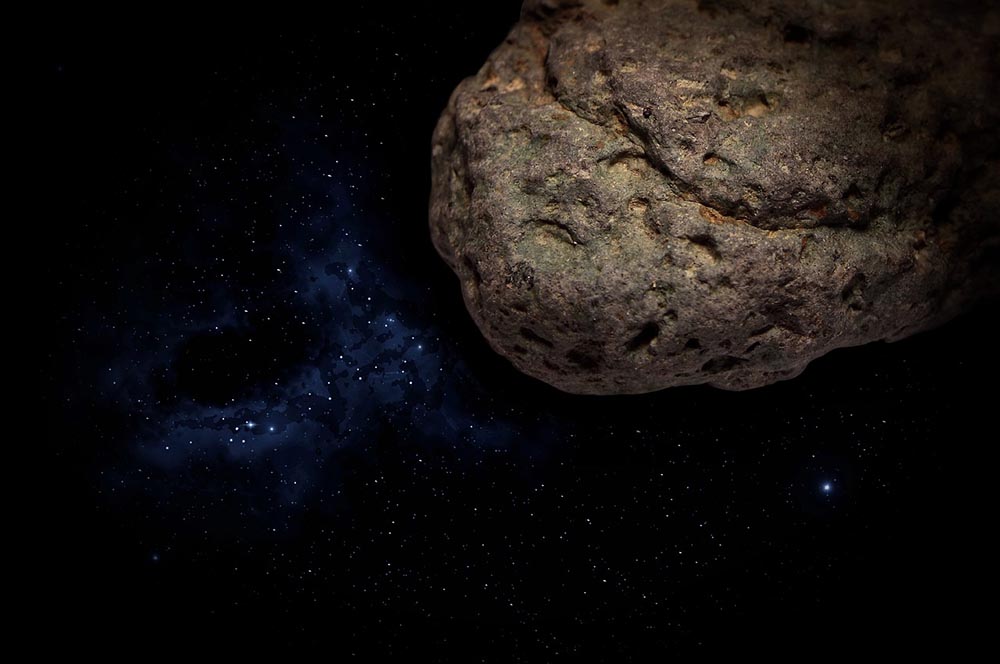Where Do Asteroids Come From? What You Need to Know!
Last Updated on

Asteroids are small objects made from rocks and other materials that emerged with the formation of the Solar System nearly 5 billion years ago. A supernova explosion caused the solar nebula, a cloud of gas and dust, to implode. When it did, most of the debris gathered together to form the Sun with the remaining debris forming planets.
Asteroids are the leftover bits of rock and dust that did not form part of the Sun or planets. Now, the majority of asteroids are found in the asteroid belt, which is located between Mars and Jupiter, although many are also found in the orbital path of planets, including Earth. These asteroids orbit the Sun on the same route as the planets they follow.

How Did Asteroids Form?
When the Solar System was formed 4.6 billion years ago, an implosion of gas and dust effectively collected all dust and gas from the solar nebula. The force of the implosion fused much of the material into one molten ball: the Sun. Some remaining pieces of the debris fused to form planets, including Earth, but the gravitational pull of Jupiter, and its formation, prevented the rocks between Jupiter and Mars from fusing together in this way. The pieces of debris that were left would become known as asteroids.
Asteroids other than those in the main asteroid belt do exist. Near-Earth asteroids and orbital asteroids likely came from the main asteroid belt but have been moved off their original path by collisions with other asteroids or by the gravitational pull of Jupiter.

Near Earth Objects
A Near Earth Object, or NEO, is one that orbits within 120 million miles of the Sun. This path means that it could pass within 30 million miles of Earth. Meteors and meteorites burn up in Earth’s atmosphere every day, but those that are over 100 feet in diameter are considered to have the potential to cause serious damage to an area they strike.
Scientists can accurately track the position of asteroids and predict their movement because they are governed by gravitational forces and orbit the Sun in the same way as planets do. It is possible that some event or collision may cause one or more to veer off course, but there are no asteroids predicted to hit Earth within the next 100 years.
What Are Asteroids Made Of?
There are three classes of asteroids, with each class made from different types of material:
- C-type asteroids are the most common and account for approximately three-quarters of all known asteroids. They are made up primarily of clay and rock. They are dark and among some of the oldest known objects in the Solar System.
- S-type asteroids consist of a combination of nickel-iron and silicate.
- M-type asteroids are metallic and consist primarily of nickel-iron.

What Causes Asteroids to Come to Earth?
The vast majority of asteroids do not and likely never will come near Earth, but near-Earth asteroids were once part of the main asteroid belt. They have been shifted off their primary course by collisions with other asteroids or by Jupiter’s gravity. The path of an asteroid is easily predicted, and even once one is shifted off course by a collision, its new path can be easily predicted.
Conclusion
Asteroids are pieces of rock and other materials that were created when the Solar System was formed 4.6 billion years ago. Although most are found in the main asteroid belt between Jupiter and Mars, some do follow the orbital path of planets including Earth. There are no asteroids headed on a path to Earth in the next 100 years.
Featured Image Credit: Frantisek_Krejci, Pixabay
About the Author Robert Sparks
Robert’s obsession with all things optical started early in life, when his optician father would bring home prototypes for Robert to play with. Nowadays, Robert is dedicated to helping others find the right optics for their needs. His hobbies include astronomy, astrophysics, and model building. Originally from Newark, NJ, he resides in Santa Fe, New Mexico, where the nighttime skies are filled with glittering stars.
Related Articles:
15 Crucial Facts About Ultraviolet Rays & the Sun
What Constellation Is Spica In? The Interesting Answer!
10 Interesting Leo Constellation Facts, Myths, and FAQs
15 Interesting Pegasus Constellation Facts, Myths, and FAQs
6 Interesting Sagittarius Constellation Facts, Myths, and FAQs in 2024!
What Are Constellations? Where Did They Come From?
8 Interesting Libra Constellation Facts, Myths, and FAQs
What Is Infrared Radiation? Science-Based Facts & FAQ
